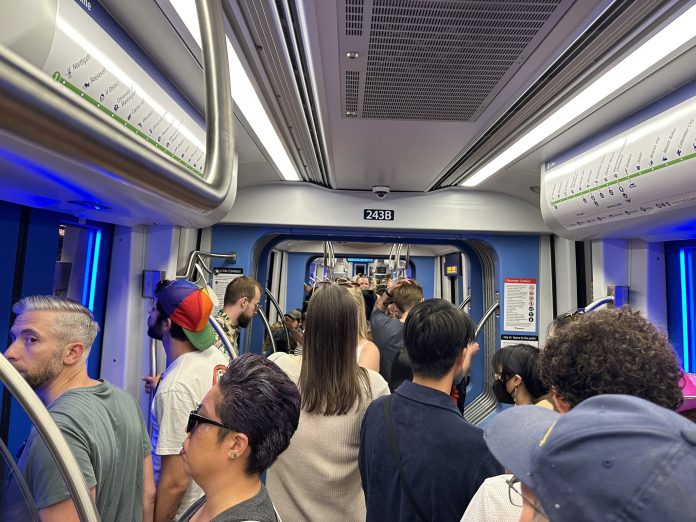
The full opening of East Link will bring a reprieve, but overcrowding issues could resume with Federal Way Link.
With approximately one year until Sound Transit plans to begin service on its extension of light rail north to Snohomish County, a clearer picture of some of the growing pains that are likely to come with that service expansion is coming into view.
The delay to open East Link (2 Line) across Lake Washington means that service will start in Shoreline, Mountlake Terrace, and Lynnwood before 1 Line has access to a second operations and maintenance yard in Bellevue’s Spring District. As a result, Sound Transit expects demand to significantly outpace available space on its light rail vehicles along a pivotal portion of the future 1 Line during peak hours.
When it launched Lynnwood Link, Sound Transit had originally planned to operate four-car trains between Angle Lake and Lynnwood at eight-minute frequencies during the busiest hours of the day. But without access to the new Bellevue trainyard, the agency will have to scale that back to 10-minute frequencies, with a mix of three and four-car trains. Late last week, Matt Sheldon, Sound Transit’s deputy executive director of planning and integration, told the agency board’s Rider Experience and Operations committee that overcrowding issues could result.
“With a train every ten minutes, with all four-car trains, we expect to see significant crowding northbound, on Link, in the afternoon peak hour, particularly between Westlake and Northgate. Three-car trains would be even more crowded,” Sheldon said. “At the high end of the ridership forecast, crowding could be severe for the entire peak hour at a level rarely observed, even during special events. And this could happen regularly, every day during the week. There is significant risk here that riders could regularly be left at the platforms.”
Furthermore, the agency’s dire predictions do not factor in event-related crowding. Major events, such as festivals, concerts, and sports games, lead to surges of riders that frequently overwhelm station platforms even before Lynnwood Link brings its projected 47,000 to 55,000 additional daily riders to the 1 Line by 2026.
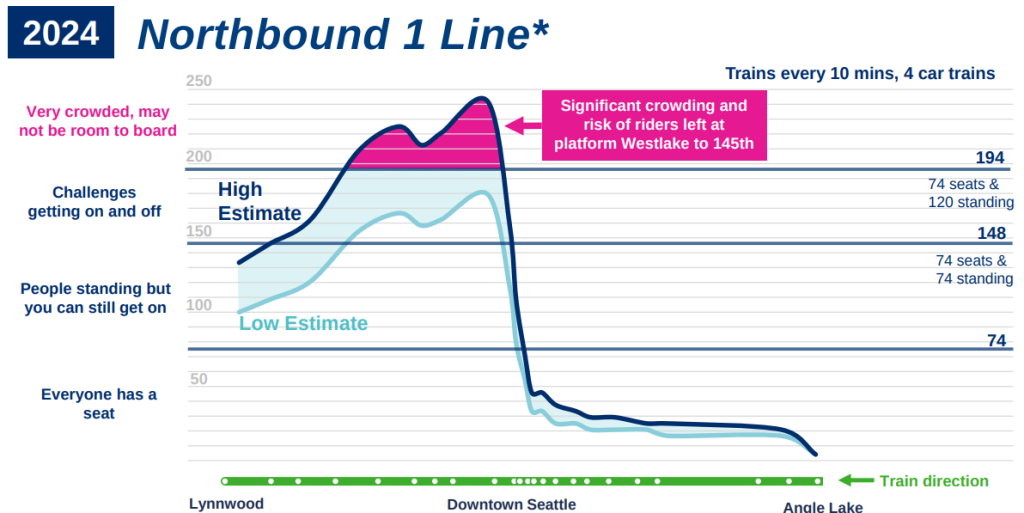
Even under the agency’s lowest ridership estimates for the period immediately following the launch of Lynnwood Link next fall, Sound Transit expects riders to experience “challenges getting on and off” while traveling northbound on the system between Westlake Station and N 148th Street station in Shoreline. If ridership trends toward the higher end of the forecast, trains may become so crowded that riders are frequently left at train platforms. And with overall ridership on Link trending only slightly below 2019 levels, higher ridership is what Sound Transit expects with the launch of Lynnwood Link — if the service is good enough.
Riders heading southbound will likely experience less crowding overall, due to the fact that the times of highest demand for morning travel are distributed over more hours. But Sound Transit still expects significant crowding between downtown Seattle stations if those higher ridership numbers come to pass. Ultimately, the predictions Sound Transit is spelling out right now will translate to significant numbers of people giving up on using light rail to get to their destinations.
Blunting Some of the Damage
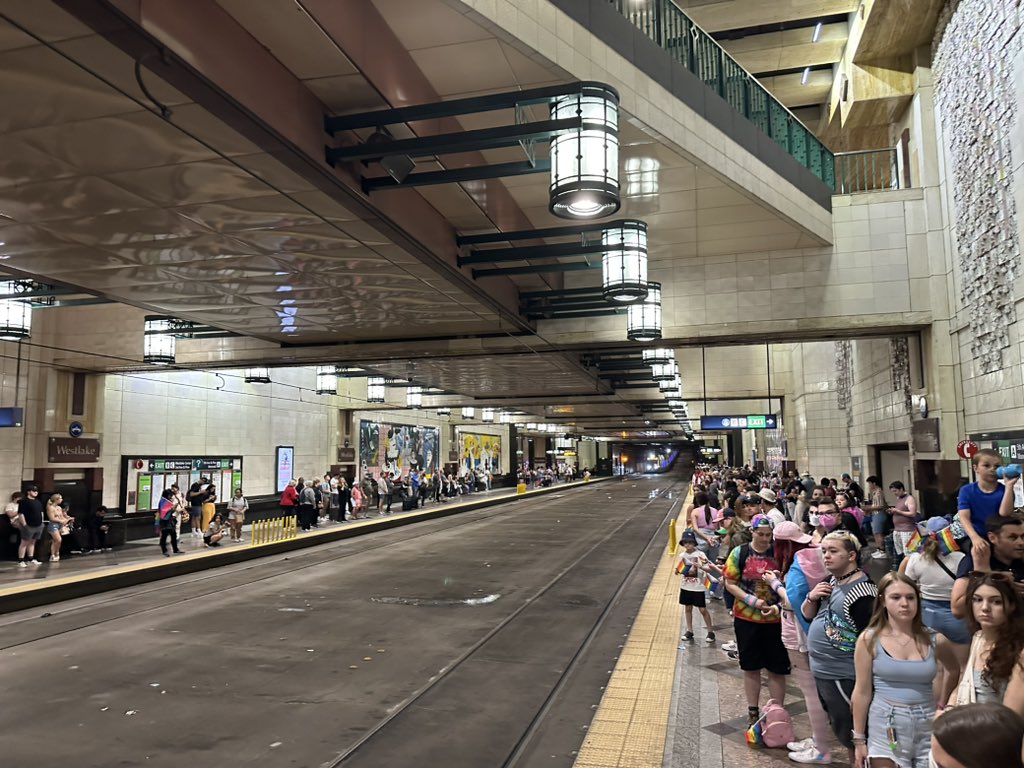
With rider demand set to outstrip train capacity, Sound Transit has only limited ways it can respond, but the agency is working on a number of strategies that will hopefully lessen some of the impacts seen in the months following Lynnwood Link’s launch. One obvious move? Ensure that trains taking up space in Sound Transit’s sole maintenance yard are operable.
Currently, only around 70% of the Siemens light rail vehicles that started going into service in 2021 are actually available for use right now, due to maintenance issues. Sound Transit’s overall goal for light rail vehicle availability is 85%, and the agency hopes to get the entire Siemens fleet to that baseline by the time Lynnwood Link is ready for start-of-service. An 80% interim goal by the first quarter of next year will make it clear whether that’s going to be achievable or not. Ultimately, that number will determine how many three-car trains are operating to Lynnwood.
The other strategy Sound Transit is looking at is postponing some of the ST Express bus restructures beyond the opening date of Lynnwood Link to retain some capacity between downtown Seattle and destinations in Snohomish County until capacity on trains can be increased.
The agency had already announced that Route 522 to Bothell and Woodinville would not be rerouted to 148th Street station with the launch of Lynnwood Link due to these capacity constraints. But now it looks likely that Sound Transit will continue to maintain direct bus service between places like Everett, with the Route 510, and downtown Seattle when otherwise it might have expected to terminate that service at Lynnwood. By stopping in Lynnwood as well, those bus services will be able to provide an alternative to riders facing full trains.
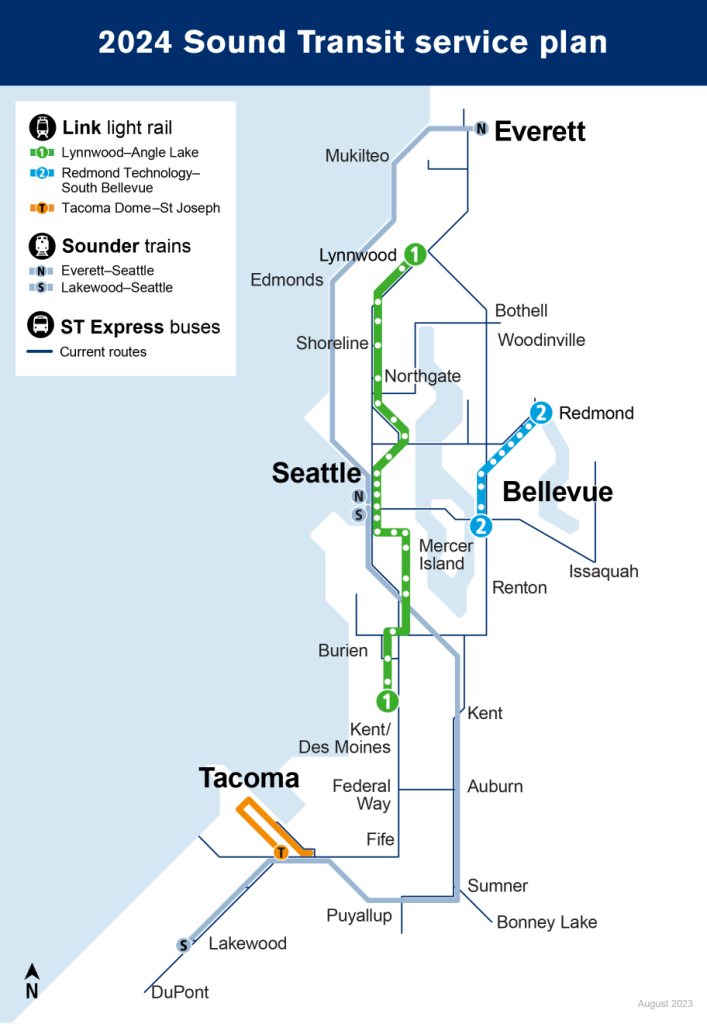
In August, the Sound Transit board included language in its resolution approving work on the East Link Starter Line directing staff to put agency resources toward maintaining capacity along I-5 with the launch of Lynnwood Link. “Until the full 2 Line opening, Sound Transit will, to the greatest extent feasible, provide sufficient additional bus services to meet rider demand,” the resolution stated.
Much of what services Sound Transit provides in Snohomish County will depend on where Community Transit is routing local buses. “While there’s more work to do with Community Transit, we are leaning toward providing bus service from downtown [Seattle] to Lynnwood, where 40% of [Community Transit]’s local buses connect, and some additional service north of there to capture riders before they get on Link,” Sheldon told the committee.
Overcrowding Expected Again in 2026
Once trains are able to use the I-90 floating bridge, crowding issues on Sound Transit’s entire light rail network should subside — at least for a while. But starting in 2026, the agency expects them to increase again, on a much shorter segment of the network. Trains are expected to operate every five minutes between Lynnwood and the International District, with half of those trips continuing south and the other half continuing to the Eastside. However, starting with the launch of Federal Way Link in 2026, those trains will be a mix of three and four cars.
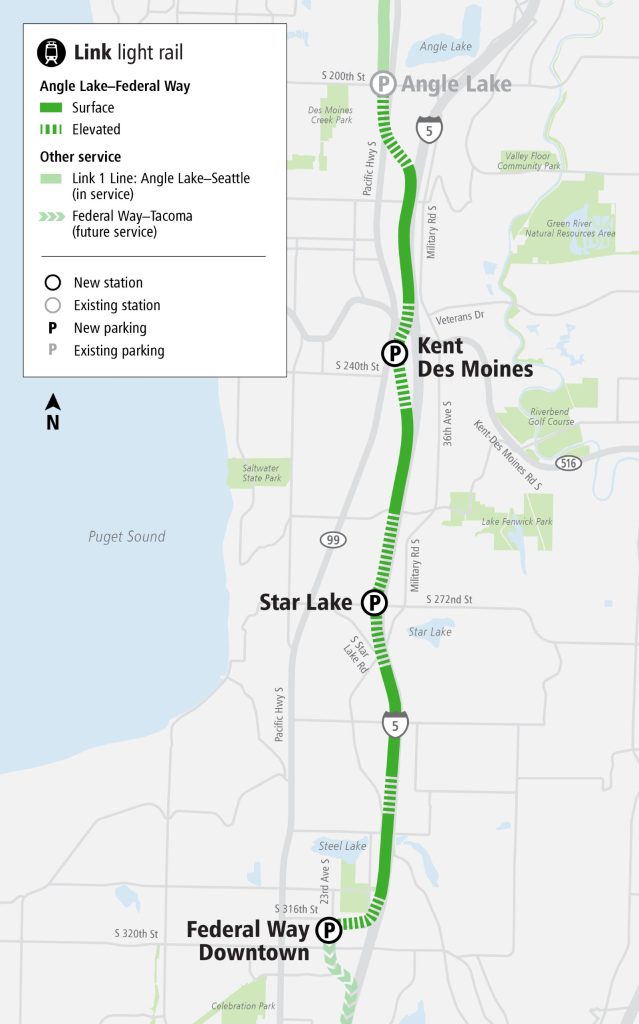
Sound Transit doesn’t expect to see the level of crowding on the system that’s expected with Lynnwood Link in the case of Federal Way Link, but trains are still expected to be very full, with very little the agency is able to do about that issue until the third series of light rail vehicles arrives in the early 2030’s… by which time the agency plans to begin service on further extensions like West Seattle.
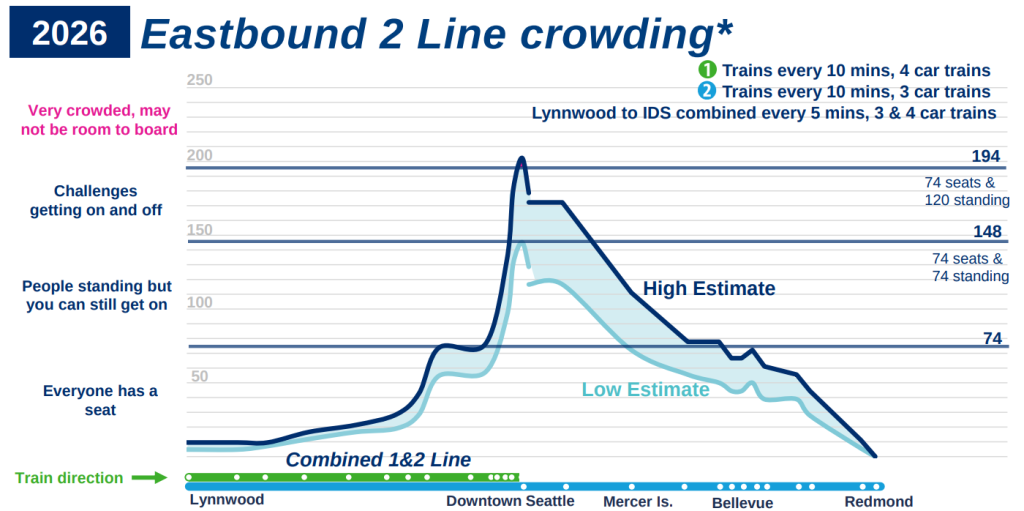
In a best-case scenario for Sound Transit, the agency may be able to run a mix of three- and four-car trains on the 2 Line to the Eastside, but issues with slower-than-expected runtimes, worse-than-expected fleet availability, and other issues could mean more three-car trains and regular challenges for riders. Unfortunately, it appears to be another instance where Sound Transit wasn’t able to fully plan ahead and be able to get out ahead of easily anticipated capacity constraints.
The fact that the long-awaited opening of Lynnwood Link now looks to be marred by an inability to meet demand should be a wake up call for Sound Transit, but it’s unclear whether the crisis will lead to a greater push for reform or if these issues will merely be seen as near-term growing pains to be suffered through. Either way, the agency clearly has some unhappy riders on the horizon with few options to turn things around.
Ryan Packer has been writing for The Urbanist since 2015, and currently reports full-time as Contributing Editor. Their beats are transportation, land use, public space, traffic safety, and obscure community meetings. Packer has also reported for other regional outlets including BikePortland, Seattle Met, and PubliCola. They live in the Capitol Hill neighborhood of Seattle.

